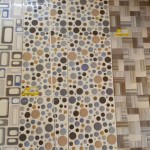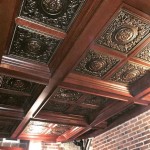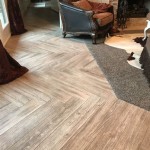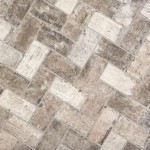Preparing a Shower Floor for Self-Adhesive Vinyl Tiles
Self-adhesive vinyl tiles offer a relatively affordable and accessible option for updating the aesthetic of a bathroom. Their ease of installation makes them appealing for do-it-yourself projects. However, successfully installing self-adhesive vinyl tiles in a shower environment presents unique challenges due to constant moisture exposure. Proper preparation of the subfloor is crucial for ensuring the longevity and performance of the tiles. Simply applying these tiles over an unprepared surface will likely lead to failure, resulting in water damage and costly repairs. Before installing self-adhesive vinyl tiles in a shower, a thorough understanding of the necessary preparatory steps is essential. This article outlines the appropriate materials and methods for creating a stable and waterproof subfloor that will support the vinyl tiles and protect the underlying structure from moisture penetration.
The primary concern when installing any flooring in a shower is water resistance. Typical subfloors, especially those made of wood or plywood, are vulnerable to water damage. Constant exposure to moisture can cause these materials to swell, warp, and eventually rot. This degradation compromises the integrity of the subfloor, leading to tile detachment, mold growth, and structural damage. Therefore, the preparatory steps must focus on creating a waterproof barrier between the tiles and the subfloor. This barrier must not only prevent water from penetrating but also provide a smooth, stable surface for the adhesive to bond effectively.
Selecting the appropriate materials for the subfloor preparation is paramount. The chosen materials must be compatible with the self-adhesive vinyl tiles and capable of withstanding the harsh conditions within a shower environment. Incorrect material selection can negate the entire preparation process and lead to premature failure of the installation.
Ensuring a Level and Stable Subfloor
The existing subfloor must be thoroughly inspected for any imperfections. Cracks, holes, or uneven surfaces will compromise the adhesion of the vinyl tiles and create weak points where water can infiltrate. Any such imperfections must be addressed before proceeding with any further preparation.
If the existing subfloor is significantly uneven, a self-leveling compound should be applied. This compound is a pourable mixture that spreads evenly across the surface, creating a perfectly flat and smooth base. Follow the manufacturer's instructions carefully when mixing and applying the self-leveling compound. Ensure that the compound is rated for wet environments and is compatible with the subsequent waterproofing membrane. Multiple layers may be necessary to achieve the desired levelness. Allow the self-leveling compound to cure completely before proceeding to the next step. This curing period is critical for the compound to achieve its full strength and water resistance.
For smaller cracks and holes, use a waterproof patching compound. This compound should be specifically designed for use in wet areas and should be compatible with the materials of the existing subfloor. Clean the area around the crack or hole thoroughly before applying the patching compound. Follow the manufacturer's instructions for application and curing time. Ensure that the patched areas are flush with the surrounding surface to avoid any bumps or depressions that could affect the tile installation.
If the existing subfloor is made of wood and shows signs of rot or damage, it must be replaced. Remove the damaged sections and replace them with new, pressure-treated lumber that is resistant to rot and insects. Ensure that the new lumber is properly secured to the joists and that it is level with the surrounding surface. Consider using a cement backer board over the wood subfloor for added stability and water resistance. Cement backer board is specifically designed for wet environments and provides a solid, stable base for tile installation.
Applying a Waterproof Membrane
Once the subfloor is level and stable, the next step is to apply a waterproof membrane. This membrane serves as a critical barrier against water penetration, protecting the underlying structure from moisture damage. There are several types of waterproof membranes available, each with its own advantages and disadvantages. Choosing the right membrane is essential for ensuring the long-term performance of the tile installation.
Liquid waterproofing membranes are a popular choice for shower installations. These membranes are applied with a brush or roller and create a seamless, waterproof coating over the entire subfloor. They are typically made of rubber or polymer-based materials and offer excellent flexibility and adhesion. When applying a liquid waterproofing membrane, ensure that the surface is clean and dry. Apply multiple coats, following the manufacturer's instructions for drying time between coats. Pay particular attention to corners and seams, which are the most vulnerable to water penetration. Reinforce these areas with fiberglass mesh tape for added protection.
Sheet membranes are another option for waterproofing shower floors. These membranes are made of a flexible, waterproof material that is applied in sheets and adhered to the subfloor. They offer a quick and easy installation, but they require careful cutting and fitting to ensure a watertight seal. When using a sheet membrane, follow the manufacturer's instructions for installation. Overlap the seams according to the manufacturer's specifications and seal them with a waterproof sealant. Use a roller to press the membrane firmly onto the subfloor, ensuring that there are no air bubbles or wrinkles.
Regardless of the type of waterproof membrane chosen, it is crucial to ensure that it extends up the walls of the shower at least several inches. This will prevent water from seeping behind the tiles and causing damage to the walls. The membrane should also be compatible with the thin-set mortar used to install the tiles.
Selecting and Applying a Primer
After the waterproof membrane is installed and fully cured, a primer may be necessary to promote adhesion between the membrane and the self-adhesive vinyl tiles. Not all waterproof membranes require a primer, so it is important to consult the manufacturer's instructions for both the membrane and the tiles. If a primer is recommended, it should be specifically designed for use with the chosen membrane and the adhesive used on the vinyl tiles.
A primer creates a more porous surface for the adhesive to bond to, improving the grip and preventing the tiles from peeling or lifting over time. It also helps to seal the membrane, preventing any moisture from seeping through and compromising the adhesion. When selecting a primer, ensure that it is compatible with both the waterproof membrane and the self-adhesive vinyl tiles. Using an incompatible primer can actually weaken the bond between the tiles and the subfloor.
Before applying the primer, ensure that the surface of the waterproof membrane is clean and dry. Remove any dust, dirt, or debris that may have accumulated during the installation process. Apply the primer evenly over the entire surface, following the manufacturer's instructions for application and drying time. Allow the primer to dry completely before proceeding with the tile installation. The drying time may vary depending on the type of primer and the ambient temperature and humidity.
In some cases, the self adhesive vinyl tiles comes with its own primer. Be sure to read the instruction on tile boxes before putting any other primer. Using the wrong primer can damage the membrane.
Choosing the right primer can be a vital step in guaranteeing that the tiles will stick to the subfloor. The primer will help bond the material together and make sure the tile does not peel off after a short amount of time.
After these three critical steps are done, you can now install the self adhesive vinyl tiles. Following the instructions provided in the box or by the manufacturer as it may vary from brand to brand.

How To Install L And Stick Tiles In Guest Bathroom For Beginners Tips Tricks Step By Part 4

Factory Interior Self Adhesive Vinyl Flooring Wall Stickers Tiles Waterproof L And Stick For Home Decor China Decoration Tile Made In Com

Self Adhesive Vinyl Flooring Tiles Waterproof L And Stick Wall Stickers Wood Grain Wallpaper Is Suitable For Floor Living Room Bedroom Wish On Splashback Stone

Self Adhesive Vinyl Flooring Wall Stickers Tiles Waterproof L And Stick For Home Decor China Floor Bathroom Tile Made In Com
Can I Add L And Stick Tiles Over My Existing Ed Quora

Buy Sandy Abstraction Self Adhesive Vinyl Tiles Gold Floor Black For Bathroom Stone Luxury Tile In

Buy Ceramic Pink Mosaic Self Adhesive Vinyl Tiles Floor White For Bathroom Patchwork Luxury Tile In

Best Panda Self Adhesive Marble Vinyl Flooring Stickers For Ubuy

Queensland L Stick Tile Stickers Kitchen Bathroom Backsplash Floor Stair Water Resistant Removable Decals Diy Vinyl Ers Home Décor House

Floorpops Comet Self Adhesive Floor Tiles Dunelm
Related Posts








